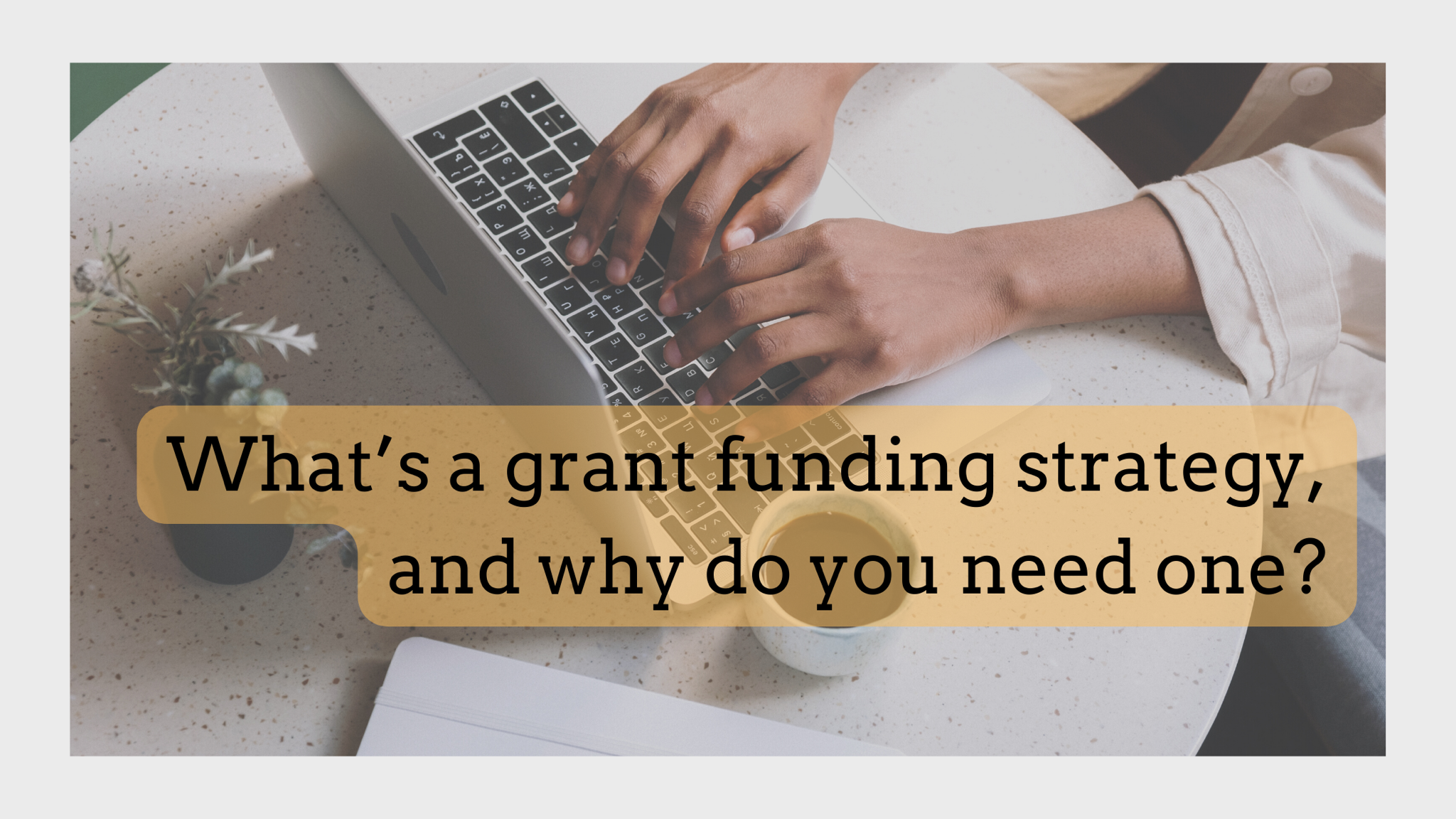
What’s a grant funding strategy, and why do you need one?
If you've worked in nonprofits long enough, you've probably been asked to or have completed a grant application within a short window. Sometimes requests for proposals (RFPs) have a short 30-day window, or you're alerted to a grant that's due in a few short days. It's hardly enough time to gather the information needed to develop a strong proposal. Grant funding deadlines can sneak up like that, and you don't want to be the unfortunate staff or board member putting together a last-minute proposal and budget. Or worse, miss this funding opportunity. And while the mightiest nonprofit professional could develop and submit a proposal in whiplash time, who wants that stress? Instead, just like with other areas of fundraising, it's essential to be strategic about grant seeking.
This is why your nonprofit needs a grant funding strategy. A funding strategy is a plan to fund your organization's goals for 12 to 18 months by identifying and mapping out best-fit grant opportunities. This road map or calendar can be for the upcoming fiscal year or include the current fiscal year. Here's the part that bears repeating: the grants should be "best fit" grants. The goal here is a return on investment, so only consider grants your organization has a strong chance of winning and ticks all the boxes for aligning with your mission, funding needs, and grant management scope. Funders grant money to organizations whose mission and programs align with their priorities. You don't want to spend time applying for grants, you aren't likely to win. Evaluate each grant funder's priorities and how they fit your organization's goals for the year. Then review the grant application requirements, deadlines, and prior recipients to determine if the grant will yield a high ROI. This information can be compiled into a list or calendar to plan out at least one fiscal year. The beauty in this is minimizing the stress that comes from last-minute applying.
A grant funding strategy isn't just for new grants. It's a plan for all viable grants your organization can be competitive for. Review any grants your nonprofit received for this fiscal year or past years. Can you reapply for any of these grants? Looking into grants you've already received gives your organization a leg up since you've already established a relationship with the grantmaker. Your program is most likely a strong fit unless the funder has shifted priorities and you already know the ins and outs of the reporting process. Check whether the grantmaker stipulates you can only apply once in a particular cycle. Now that you've considered new grants and grants you've been previously awarded, it's time to look at those you applied for and did not receive. Hopefully, you've arranged a conversation with the funder to understand why your proposal wasn't funded. Now is a great chance to use that feedback to present a robust grant application. Developing a well-structured and compelling proposal takes time, and nonprofits are perpetually busy. A clear roadmap of best-fit grants and their deadlines within the frame of other grants you seek is vital for avoiding burnout and missing funding opportunities.
Post a comment